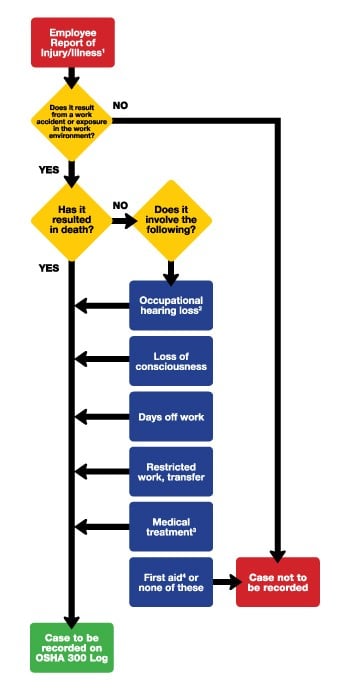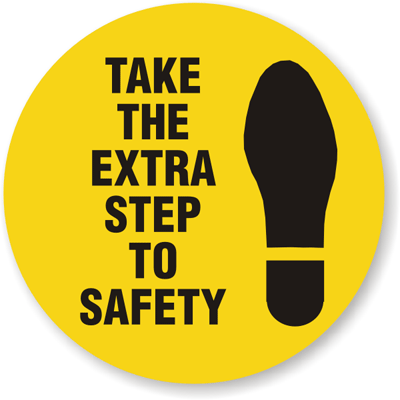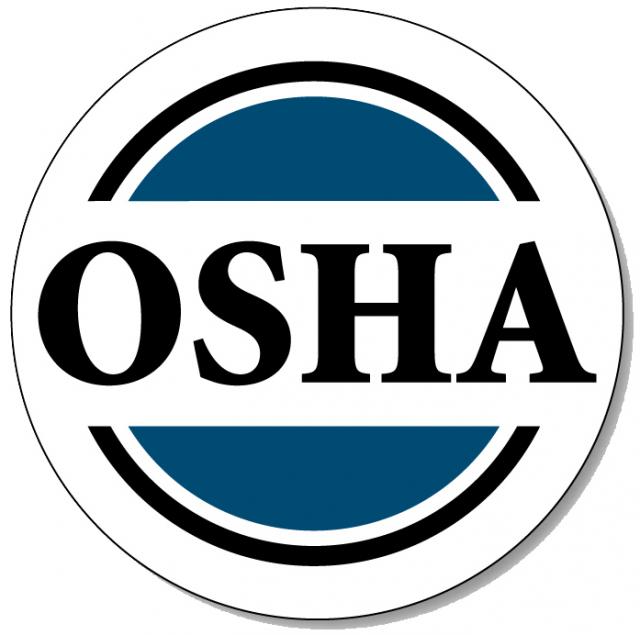Just as we all take a deep breath after getting the CRTK submissions on March 1 --- now it is time to get started pulling together the information for the next round of submissions. We’ve pulled together our Spring and Summer submission list. Similar to our 1Q2016 Regulatory Submission Reminder, we detail information about the regulations that require submissions from mid-April through September 2016 along with specific dates to help you ensure that everything is submitted on time!
Read MoreEnvironmental Health and Safety Blog | EHSWire
Topics: OSHA, EPA, TSCA, regulations, regulation, regulatory
There are three OSHA recordkeeping forms that you should we aware of as an employer. These include the OSHA 300 Log, the OSHA Form 301 and the OSHA 300A. The OSHA 300 Log is used to record and track work-related injuries and illnesses as well as any associated lost, restricted or transfer days. The OSHA Form 301 is used to describe details associated with work-related injuries and illnesses and to report Workers’ Compensation claims to insurance carriers. It is not unusual for many insurance companies to have an “equivalent” to the 301 Form that they use internally. OSHA allows for the use of an equivalent form, provided that it contains as least the same required information as the OSHA Form 301. The OSHA 300A or annual summary, only includes a summary of work-related injury and illness information including the number of cases, all associated lost and/or restricted days and selected operational information such as the employers address and NAICS or SIC codes. Key requirements of the OSHA 300A are that it must be reviewed by a senior member of the management team, signed to indicate their approval and posted for a specific period of time. Additional information on each of the three forms is contained below. All forms are available at www.OSHA.com.
Read MoreTopics: OSHA, OSHA Compliance, OSHA 300A Preparation
Employers are responsible for recording all work-related injuries and illnesses. If you are unable to determine if an injury or illness is recordable after you have completed the investigation, and evaluated all available documents, it is recommended that you contact the OSHA area office nearest you.
Read MoreTopics: OSHA, OSHA Recordkeeping regulation (29 CFR 1904), severe work-related injury and fatality reporting, OSHA Compliance, OSHA Hazard Communication Standard, reporting, Medical Records, OSHA Injury and Illness Recordkeeping and Reportin
The Occupational Safety and Health Administration’s (OSHA) recordkeeping requirements have been in place since 1971 (29 Code of Federal Regulations CFR Part 1904). The requirements were updated in 2002 to make it easier for employers to comply. OSHA has again updated the recordkeeping rule for 2015 to include two key changes.
Read MoreTopics: OSHA, OSHA Recordkeeping regulation (29 CFR 1904), health and safety, OSHA Compliance, Occupational Health, health hazards, occupational health and safety, reporting, Medical Records, OSHA Injury and Illness Recordkeeping and Reportin, OSHA 300A Annual Recordkeeping Summary Form, incident investigation
OSHA Releases New Resources to Protect Hospital Workers and Enhance Patient Safety
Posted by Shivi Kakar
On January 16, 2014, OSHA released the details of a new initiative which will help hospital workers and patients maintain better safety. According to research that conducted in 2012, U.S hospitals reported over 250,000 work related injuries of which nearly 60,000 caused individuals to miss work. As a result, workers compensation claims cost hospitals over $2 billion in annual expenses. According to OSHA, a majority of injuries were caused by moving and lifting patients, needle sticks, exposure to infectious diseases, slip and falls, workplace violence, and exposure to hazardous chemicals and medications.
Topics: OSHA, enhance patient and hospital worker safety, work related injuries, health and safety management guides
OSHA's New Safety Signage Ruling Aimed at Improving Workplace Safety
Posted by Shivi Kakar
In this November’s Federal Register, OSHA confirmed the September 11, 2013 effective date of its direct final rule revising the accident prevention signs and tags standards for general industry and construction. On June 13, 2013, OSHA published the final rule updating references in the signage standard to more recent national consensus standards approved by the American National Standards Institute (ANSI). Since the agency received no significant adverse public comments by its July 15 deadline, it was able to confirm the effective date of the final rule of September 11, 2013. For the purposes of judicial review, however, OSHA considers November 6, 2013, the date of issuance of the final rule.
Topics: OSHA, Improving Workplace Safety, accident prevention signs and tags standards, ANSI Z535 Committee for Safety Signs and Colors
In late October this year, OSHA released its new web resources to help employers better protect their workers from hazardous chemicals. Tens of thousands of workers are made sick or die from occupational exposures to thousands of hazardous chemicals that are used in workplaces. While many chemicals are suspected of being harmful, OSHA only regulates a small number and unfortunately, the agencies exposure standards for these hazards are out-of-date and inadequately protective.
Topics: Emilcott, OSHA, Transitioning to Safer Chemicals, Annotated Permissible Exposure Limits, OSHA PELs
OSHA Proposes to Lower PEL for Crystalline Silica to Lessen Work Related Lung Problems
Posted by Shivi Kakar
OSHA Proposes to Lower PEL for Crystalline Silica. The proposal was first put forth on August 23rd and is intended to decrease work related lung cancer, silicosis, chronic obstructive pulmonary disease, and kidney disease. OSHA wants to lower its Permissible Exposure Limits (PELs) from 100 micro grams of respirable silica per cubic meter of air to 50 micro grams.
Topics: OSHA, Lower PEL for Crystalline Silica, Permissible Exposure Limits (PELs), Exposure to silica dust
There has been a lot of talk about the sequestration and across the board budget cuts. OSHA is not exempt from the March 1st mandate. In fact, OSHA is directed to cut it’s $564.8 million budget by 8.2 percent. Safety advocates estimate OSHA will conduct 2,100 fewer inspections this year to comply with terms of the sequester. What do the $46 million in budget cuts mean for your business? It means being more compliant than ever.
Topics: Emilcott, Occupational Safety and Health Administration (OSH, OSHA, Sequester Cuts Affect OSHA
If you have a giant stack of the best Personal Protective Equipment (PPE), but don’t use it, or just as important, don’t use it properly, are you trying to become an OSHA statistic? Knowing how to protect yourself from occupational hazards is a critical part of your job.
A Real Life PPE Correction
A few years ago, I was taking my annual HazWOPER 8-Hour Refresher class and a fellow student shared his story about PPE.
Part of his job was to open and close valves that allowed aviation fuels to flow to pumps used to fill airplane fuel tanks. While conducting this task, he was often exposed to fuel vapors. After complaining about the headaches and dizziness that he was experiencing, his employer had him fit tested for a respirator. However, even with the proper-fitting respirator, he still had the same symptoms of overexposure.
Why didn’t the respirator control the exposure? As a health and safety professional, the answer was obvious to me! I asked him, “What type of cartridge are you using?”
His reply, “I am using what was given to me.” Two days later he called me to tell me that he had been given HEPA filters – the WRONG cartridge for his petroleum vapors. Instead he should have been using organic vapor cartridges. Without correction, this COULD have been become a very dangerous problem – just because of the wrong cartridge in the right respirator!
Proper Protection: Where Do You Start?
A perfect place to start understanding how to protect yourself is to know what you are dealing with on the job.
1) What are the potential hazards? Is there more than one? Not sure? Ask questions! Make sure that you understand the hazards and risk before you are satisfied?
Topics: OSHA, Personal Protective Equipment, General Industry H&S, General EHS, Construction H&S, H&S Training, worker safety, hazards, Lab Safety & Electrical, respirator, Exposure, Respiratory












